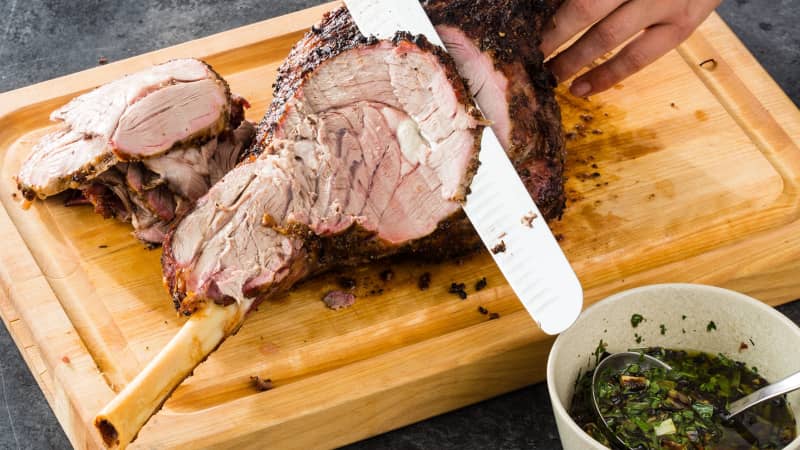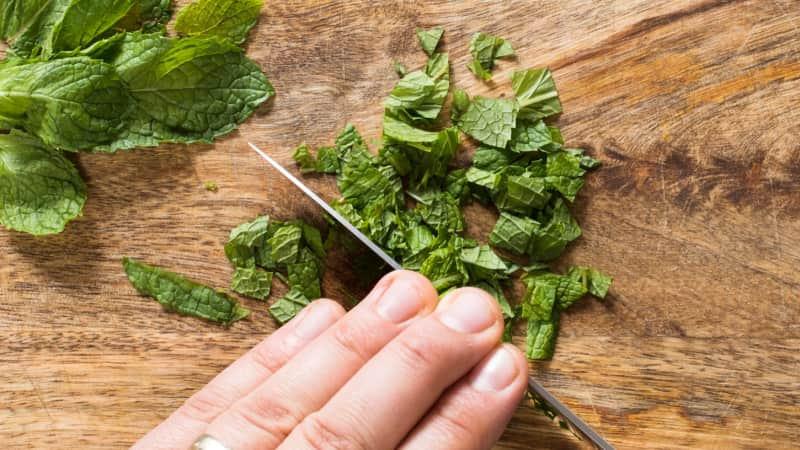In 2011, researchers published an article in Scientific Reports called “Flavor Network and the Principles of Food Pairings,” introducing a complicated, graphic flavor network that “captures the flavor compounds shared by culinary ingredients.”
Why Pair Lamb and Mint?
Published Mar. 21, 2019.

The theory goes that foods that share similar flavor compounds complement each other, tasting better together (even seemingly incongruous ingredients—think blue cheese and chocolate). This theory can expand to include not only ingredients that share the same flavor compounds, but also those that share compounds that have similar chemical structures. Many science-minded chefs, including Heston Blumenthal at the Fat Duck in London, are on board. There are even companies—like the well-named FoodPairing.com—that exist to help bartenders and chefs discover “unseen pairings based on science.”
That's all well and good, but what does this tell us about lamb? Lamb is traditionally served with fresh mint in recipes originating in places like England and the Middle East. Does science explain why these two ingredients pair so well?
Sign up for the Notes from the Test Kitchen newsletter
Our favorite tips and recipes, enjoyed by 2 million+ subscribers!
Let's start with the unique flavor of lamb. Roasted and grilled lamb has a flavor unlike any other cooked meat, distinguished by the release of volatile aroma compounds in the fat during cooking. The majority of these compounds are branched-chain fatty acids (BCFAs).
And mint? Mint is rich with branched-chain ketones, which are chemically related to lamb's BCFAs and have similar, though not identical, aromas. This means, according to the theory of food pairing, that lamb and mint are a scientific match. (The dominant flavor compounds in mint are not found in other herbs, like tarragon or basil. But it's important to note that this doesn't mean other herbs taste bad with lamb.)

In addition, researchers have found another interesting compound in lamb that originates from the animal's diet. This compound, called 2,3-octanedione, is formed when the lamb consumes fresh clover and ryegrass. It is stored in the lamb's fat and, according to this theory, chemically bridges the gap between the BCFAs and the branched-chain ketones, with a similar sweet, fruity aroma that complements the aroma of mint.
Interested in tasting this minty-lamby synergy for yourself? Try one of our recipes:
